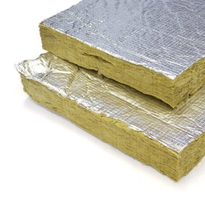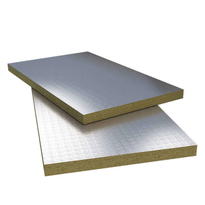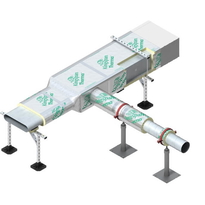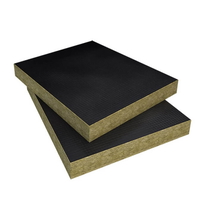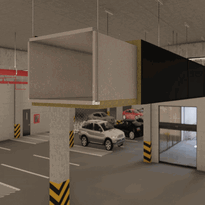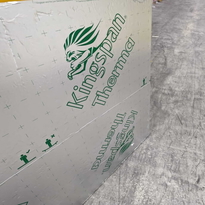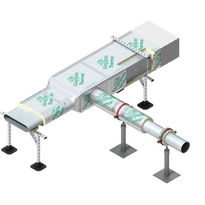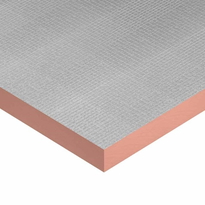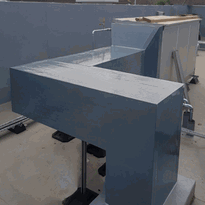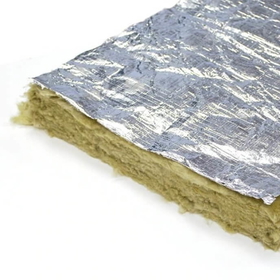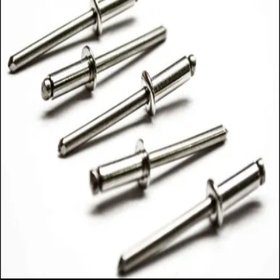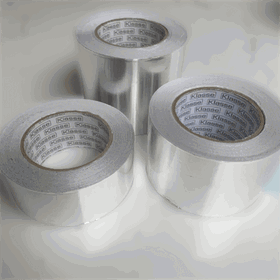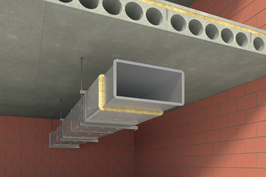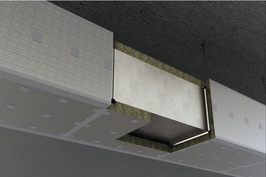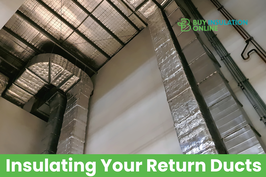Similar Categories
The Ultimate Guide to Duct Board Insulation in the UK
Duct board insulation is a key component in the design of contemporary buildings, significantly contributing to the efficient use of energy and maintaining high indoor air quality standards. In exploring the details of duct board insulation, we discover its numerous advantages that go beyond just saving energy.
Energy Efficiency: A Focus on Sustainability
In an effort to be more sustainable, duct board insulation takes the lead by noticeably lessening the energy needed for heating, ventilation, and air conditioning (HVAC) systems. Acting as a barrier against heat, it cuts down on heat loss during winter and prevents excessive heat gain in summer. This results in a significant drop in energy usage and, consequently, lower utility bills.
Indoor Air Quality
The quality of the air inside is crucial for the well-being and comfort of those indoors. Duct board insulation plays a part in creating a healthier indoor environment by lessening the chance of condensation. This, in turn, helps prevent the growth of mould and the spread of allergens. Additionally, it reduces the noise from the HVAC system, making the indoor atmosphere quieter and more serene.
Choosing the Right Insulation
Deciding on the right duct board insulation is a big deal. In the UK market, there are different products to suit various needs, like Rockwool Aluminium Faced Mineral Wool Duct Board and Kingspan Aluminium Faced Phenolic Insulation Board. Each one has its own unique features, catering to specific thermal and sound requirements.
Understanding the Product Landscape
In the UK, you'll find a range of insulation options that comply with strict building regulations. For example, the Rockwool Firepro Black Foil Faced Mineral Wool Duct Board offers excellent fire resistance. Meanwhile, the Kingspan Aluminium-Faced ThermaDuct Insulation Packs are designed for easy installation with pre-cut sections for different duct sizes.
Getting the Basics Right: Installation
Proper installation is the foundation of effective insulation. It involves accurate measurements, careful cutting, and secure fitting to make sure the insulation covers the ductwork completely. Following the manufacturer’s guidelines and UK installation standards is crucial for achieving the desired insulation performance.
Joining the Insulation Movement
As we explore the world of duct board insulation, we aim to give you the knowledge to make informed decisions. This guide is like your map in the vast world of insulation choices, helping you make decisions that align with your goals for energy efficiency and indoor air quality.
Understanding Duct Board Insulation
 Duct board insulation is a cornerstone of modern HVAC systems, ensuring that air is efficiently distributed throughout a building while maintaining the desired temperature and minimising noise. The two primary materials used for duct board insulation in the UK are mineral wool and phenolic foam, each with its own set of advantages that cater to different insulation needs.
Duct board insulation is a cornerstone of modern HVAC systems, ensuring that air is efficiently distributed throughout a building while maintaining the desired temperature and minimising noise. The two primary materials used for duct board insulation in the UK are mineral wool and phenolic foam, each with its own set of advantages that cater to different insulation needs.
Mineral Wool
Mineral wool insulation, including varieties such as glass and rock mineral wool, is lauded for its ease of installation and superior real-world performance. It is made from natural materials like volcanic rock or recycled glass, which are melted and spun into fibres. This process creates a flexible material that can fill cavities, eliminating air gaps and enhancing thermal performance. Mineral wool is also recognized for its non-combustible properties, achieving Euroclass A1 and A2-s1,d0 fire classifications, making it a safe choice for buildings.
Phenolic Foam
Phenolic foam insulation stands out for its low thermal conductivity, which translates to long-term energy cost savings. It is known for its closed-cell structure that results in a low lambda value, meaning it is highly effective at preventing heat transfer. This makes phenolic foam up to 50% more thermally efficient than other common insulation materials. Additionally, its moisture resistance and structural strength make it an ideal choice for duct supports and other applications where durability is key.
Thermal Properties
The thermal properties of duct board insulation are critical for maintaining energy efficiency. Materials like mineral wool and phenolic foam have low thermal conductivity, meaning they are excellent at reducing heat transfer between the air in the ducts and the surrounding environment. This ensures that heating or cooling systems work more efficiently, saving energy and reducing costs.
Acoustic Properties
Acoustic comfort is another important aspect of duct board insulation. Both mineral wool and phenolic foam have sound-absorbing qualities, which help to dampen the noise generated by air flowing through ducts. This creates a quieter and more comfortable indoor environment, which is especially beneficial in residential and commercial buildings where noise pollution can be a concern.
Understanding the materials used in duct board insulation is key to selecting the right product for your project. Whether you prioritise sustainability, thermal efficiency, or acoustic performance, both mineral wool and phenolic foam offer compelling benefits that can meet a wide range of insulation needs in the UK.
Key Products in the Market Available at Buy Insulation Online
In the realm of duct board insulation, two products stand out in the UK market for their exceptional quality and performance: Rockwool Aluminium-Faced Mineral Wool Duct Board and Kingspan Aluminium-Faced ThermaDuct Insulation Board. These products are designed to meet the diverse needs of HVAC systems, providing effective thermal regulation and noise reduction.
Rockwool Aluminium Faced Mineral Wool Duct Board
Rockwool’s mineral wool duct boards are renowned for their robustness and versatility. Composed of high-density, non-combustible mineral wool, these boards are finished with a high emissivity aluminium foil facing, enhancing their thermal properties. The aluminium facing also serves as a vapour barrier, preventing moisture ingress and ensuring the longevity of the insulation.
The Rockwool duct boards are suitable for a wide range of temperatures, recommended for service temperatures of up to 230?C. This makes them ideal for both high-temperature industrial applications and standard commercial use. Additionally, the mineral wool’s acoustic absorbency contributes to a quieter HVAC operation, which is particularly beneficial in environments where noise reduction is crucial.
Rockwool Duct Insulation - Duct Slab offers top-tier thermal and sound insulation for rectangular and square ducts. The mineral wool core with an outer foil layer ensures superior fire resistance, achieving the highest A1 Euroclass rating. Easy to handle and install, these boards prevent air leakage, optimise HVAC system performance, and enhance workplace safety. With water repellency and chemical inertness, they combat condensation and mould growth. Sustainable and 97% recyclable, Rockwool duct slabs contribute to energy efficiency, making them an ideal choice for a quiet, efficient, and environmentally conscious workplace.
Rockwool FirePro DuctRock offers unmatched fire protection and insulation for square and rectangular ductwork. Crafted with non-combustible, high-density mineral wool and a black foil-facing, it provides up to 2 hours of fire resistance in ventilation and smoke extract ducts. The duct boards are easy to install, cut, and demonstrate low thermal conductivity, ensuring efficient heat loss prevention and sound insulation. With a versatile application across various ducts, these environmentally friendly boards are made from responsibly sourced, sustainable stone wool, boasting a 97% recyclability. Ideal for commercial and industrial settings, Rockwool FirePro DuctRock ensures safety, energy efficiency, and acoustic comfort.
 Kingspan's Aluminium-Faced Thermaduct Insulation Boards offer high-performance thermal insulation for rectangular and square-shaped ductwork in HVAC applications. With a closed-cell PIR core, these boards minimise heat transfer and provide uniform insulation throughout the ductwork. The low-emissivity foil on both sides acts as a moisture-resistant vapour barrier, ensuring durability. Ideal for diverse projects in residential, commercial, institutional, and industrial sectors, these duct boards are chemically inert, fibre-free, and environmentally friendly. They boast a European fire classification of E, a service temperature range of -20°C to +80°C, and a thermal conductivity of 0.023 W/mK. Kingspan's Thermaduct combines superior insulation with a neat finish for optimal performance.
Kingspan's Aluminium-Faced Thermaduct Insulation Boards offer high-performance thermal insulation for rectangular and square-shaped ductwork in HVAC applications. With a closed-cell PIR core, these boards minimise heat transfer and provide uniform insulation throughout the ductwork. The low-emissivity foil on both sides acts as a moisture-resistant vapour barrier, ensuring durability. Ideal for diverse projects in residential, commercial, institutional, and industrial sectors, these duct boards are chemically inert, fibre-free, and environmentally friendly. They boast a European fire classification of E, a service temperature range of -20°C to +80°C, and a thermal conductivity of 0.023 W/mK. Kingspan's Thermaduct combines superior insulation with a neat finish for optimal performance.
Kingspan's Therma Duct Insulation offers top-tier thermal insulation for ductwork, surpassing traditional materials. With a rigid thermoset polyisocyanurate (PIR) core and closed-cell structure, it minimises heat transfer while providing a seamless finish. The low-emissivity foil on both sides acts as a vapour barrier, ensuring moisture resistance. Ideal for HVAC applications, the boards are chemically inert, safe, and contribute to improved air quality. Available in various thicknesses, these 2.4m x 1.2m duct insulation boards cater to diverse project needs, offering uniform thermal insulation. The product's fire classification, temperature range, and eco-friendly features further enhance its appeal, making it a cost-effective and efficient solution for residential, commercial, and industrial projects.
Both Rockwool and Kingspan offer aluminium-faced duct boards that are leaders in their class, providing durable, high-quality insulation solutions for a variety of applications. Whether you are insulating a new construction or upgrading an existing system, these products deliver the performance and reliability needed to ensure energy efficiency and comfort.
Installation and Application:
The installation of duct board insulation is a meticulous process that demands precision and adherence to best practices. It is not merely about placing insulation material; it’s about creating an energy-efficient, safe, and long-lasting HVAC system.
Measuring and Preparing:
Before any insulation is cut or placed, accurate measurements of the ductwork are essential. This ensures that the insulation fits perfectly, providing maximum coverage without gaps or overlaps. The preparation phase also includes cleaning the duct surfaces and ensuring they are free of any debris or sharp edges that could damage the insulation.
Cutting to Size:
Once measurements are taken, the insulation boards need to be cut to the exact size. This step requires sharp tools and a steady hand to ensure clean cuts that match the ductwork’s dimensions. It’s important to remember that poorly cut insulation can lead to thermal bridging, where heat escapes, reducing the insulation’s effectiveness.
Fitting the Insulation:
The fitting process involves placing the insulation boards around the ductwork and securing them in place. This might involve using adhesives, tapes, or mechanical fasteners, depending on the type of insulation and the manufacturer’s recommendations. The goal is to create a continuous layer of insulation without any breaks or air pockets.
Sealing and Finishing:
After the insulation is fitted, all seams and joints must be sealed to prevent air leakage. This can be done using foil tape or mastic sealant, creating an airtight barrier that enhances the insulation’s performance. The finishing touches also include inspecting the installation to ensure that it meets all UK building regulations and manufacturer guidelines.
Compliance with UK Building Regulations In the UK, duct board insulation must be installed in compliance with specific building regulations that govern thermal performance and fire safety. These regulations ensure that the insulation contributes to the building’s overall energy efficiency and does not pose a fire hazard.
Proper installation of duct board insulation is critical to its performance and longevity. By following the steps outlined above and adhering to UK building regulations, you can ensure that your HVAC system operates at peak efficiency, providing comfort and energy savings for years to come.
Compliance and Standards
In the UK, the installation of duct board insulation is governed by a robust framework of standards and regulations designed to ensure that all materials and practices contribute to a safe, efficient, and sustainable built environment.
BS 5422: 2023 is the definitive standard providing specifications for the thermal insulation of pipework, ductwork, and equipment within the UK and Ireland. This document is crucial for professionals in the building services and HVAC sectors, as it outlines the minimum performance levels required for different operating conditions. The 2023 update to BS 5422 has introduced key changes, including simplified tables and updated references to Euroclass fire ratings, ensuring that the materials used are of the highest safety standards.
BS 5970:2012 offers comprehensive recommendations for the thermal insulation of pipework, ductwork, and associated equipment across a wide temperature range, from -100°C to +870°C3. This code of practice is divided into sections that cover general principles, design, site considerations, application methods, and post-installation inspection and maintenance. BS 5970 emphasises the importance of selecting insulation systems that align with specific requirements and acknowledges the role of thermal insulation in reducing greenhouse gas emissions.
Ensuring Effective Performance and Safety Compliance with these standards is not just about adhering to technical specifications; it’s about ensuring that the insulation performs effectively, contributes to the energy efficiency of buildings, and, most importantly, is installed safely. The standards provide a framework for quality, but it is the responsibility of the professionals to apply these guidelines effectively in their projects.
Staying Informed and Updated It is essential for industry professionals to stay informed about the latest updates to these standards, as they can have significant implications for the specification and installation of insulation materials. For instance, the incorporation of the Energy Technology List into BS 5422:2023 as enhanced tables and the specific district heating table based on 55°C flow temperatures represent a more demanding set of requirements.
Adhering to BS 5422 and BS 5970 is a commitment to excellence in building practices. It ensures that duct board insulation not only meets the required thermal and safety standards but also contributes to the broader goals of energy efficiency and environmental sustainability. By following these standards, professionals can guarantee that their insulation projects stand the test of time and deliver on their promises of performance and safety.
Conclusion
In conclusion, understanding and implementing duct board insulation in the UK is crucial for maximising energy efficiency and maintaining indoor air quality. With a focus on sustainability, choosing the right insulation, such as Rockwool and Kingspan products, is a key decision in achieving optimal thermal regulation and noise reduction. Proper installation, following UK building regulations like BS 5422 and BS 5970, ensures the insulation's effectiveness, safety, and longevity. By staying informed about the latest standards and advancements, industry professionals can contribute to creating energy-efficient, environmentally conscious buildings that prioritise both comfort and sustainability.
In summary, duct board insulation plays a vital role in modern HVAC systems, offering benefits such as energy efficiency, improved indoor air quality, and sound reduction. The choice between mineral wool and phenolic foam depends on specific project requirements. Leading products in the UK market, like Rockwool's Aluminium-Faced Mineral Wool Duct Board and Kingspan's Aluminium-Faced ThermaDuct Insulation Board, exemplify quality and performance. The meticulous installation process, adherence to UK building regulations, and compliance with standards like BS 5422 and BS 5970 ensure the insulation's effectiveness and safety. Staying updated on industry standards is essential for professionals committed to delivering long-lasting, efficient, and environmentally conscious insulation solutions.
